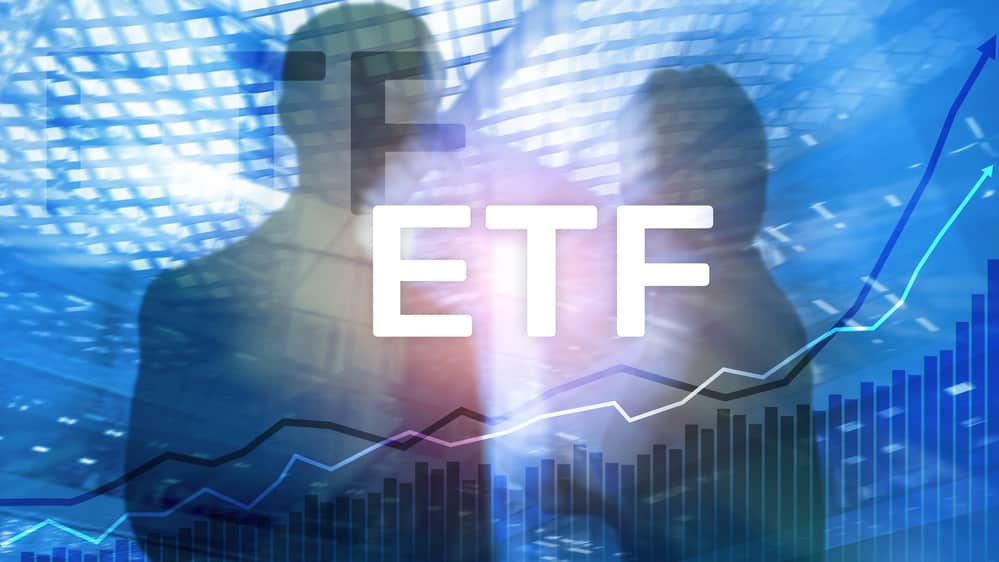
Exchange-Traded Funds (ETFs) are financial assets that track a single or a group of similar assets. An ETF can track a group of stocks, commodities, bonds, and other ETFs. In this article, we will explain how ETFs work and the main difference between an active and passive ETF. We will then conclude with the pros and cons of each.
What is an Exchange-Traded Fund?
There are two sides to the term ETF. On the right side, we see that an ETF is a fund, meaning that it is a sum of money that is invested in different assets.
On the left side, we see that an ETF is exchange-traded, meaning that it is listed in an exchange like the New York Stock Exchange (NYSE) or Nasdaq. Therefore, if you have a fund that is not listed in these exchanges, it cannot be termed as an ETF.
An ETF can track a single asset. For example, the recently-launched Bitcoin Futures ETF tracks just one asset. It tracks the Bitcoin Futures listed at the CME. Similarly, the iShares Gold Trust invests in gold.
At the same time, an ETF can track thousands of assets. For example, the Vanguard Total International Stock ETF tracks all stocks traded in major countries globally.
ETFs are created by companies of all sizes. Most ETFs are created by companies like Vanguard, Blackrock, and State Street that have trillions of dollars in assets under management (AUM). Similarly, there are many smaller companies like Direxion, VanEck, and ProShares that provide ETFs.
Passive vs. active ETFs
There is a debate that has been going on for years about the better investing approach between passive and active investments. In this section, we will look at the difference between active and passive ETFs and identify better investments.
What is a passive ETF?
Passive ETFs are the most popular in the financial market. A passive ETF is one that tracks an already established index. A good example of an index is the Nasdaq 100, which is a financial instrument that tracks the biggest tech companies in the US. Similarly, the Dow Jones index tracks about 30 of the biggest companies in the US. These companies are from different sectors.
Indices are created by several companies, which don’t offer ETFs themselves. A good example of a company that offers tailor-made indices is Bloomberg. For example, the company offers the Bloomberg Commodity Index (BCOM) that tracks some key commodities. Other companies that offer indices are S&P Global and MSCI.
Therefore, what a passive ETF does is to track an existing index. For example, an ETF that tracks the Dow Jones index must own all companies in the index at the same weighting. The fund manager cannot sell a stock he believes will underperform in a passive fund.
What is an active ETF?
An active ETF, on the other hand, is an ETF that is actively managed. This means that the fund manager actively buys and sells stocks at will. They base their decisions on active research. These funds don’t track a certain index. Instead, they gauge their performance against another asset. For example, an active money manager can measure their performance against an index like the Nasdaq 100 or the S&P 500.
Like passive funds, these funds are offered by both small and large companies like Invesco and Ark Invest.
Active vs. passive ETFs: pros and cons
There are pros and cons of investing in both passive and active exchange-traded funds. First, in most cases, passive ETFs are usually cheaper than active funds. The reason for this is simple. Passive funds exist to track an already-created index. In other words, the fund managers don’t spend a lot of time doing their own research.
Active ETFs are different from this. For one, a company that offers the funds needs to hire a fund manager and other investment analysts to find opportunities. The costs of these analysts are relatively high. Therefore, the cost of accessing these funds becomes higher as well.
For example, the average expense ratio of an actively-managed fund is between 0.5% and 1%. This is a lot of money, considering that some of the biggest passive funds have an expense ratio of less than 0.05%. This explains why companies that offer these services don’t make a lot of money. For example, while Blackrock has more than $1.9 trillion in assets, its total revenue in 2020 was about $16 billion.
Therefore, in terms of fees, passive funds are better investments than active funds.
Second, passive funds are more predictable than active funds. This is because these funds rarely change. For example, the Invesco QQQ ETF that tracks Nasdaq 100 index has been the same for years. As such, it is relatively easy for you to predict what will happen in the future.
Active funds are more volatile. For one, their performance tends to depend on the portfolio manager. If the fund has a good portfolio manager, there is a likelihood that it will do well. However, it is difficult to predict what will happen in the future. Therefore, there is always a risk of a change of leadership.
Third, about flexibility, active ETFs are usually better because the money manager can adapt faster. For example, if the manager believes that low-interest rates will push growth stocks higher, he can rebalance his fund accordingly. Also, there are more active funds that track several industries that don’t have indices. For example, an active manager can create a fund that tracks space, restaurants, and cloud computing funds.
Summary
Passive and active ETFs are the two main types of assets that you can invest in for stable income. In this article, we have looked at what these funds are, how they work, and the main differences between active and passive ETFs. We have also looked at some of the pros and cons of investing in these funds.







